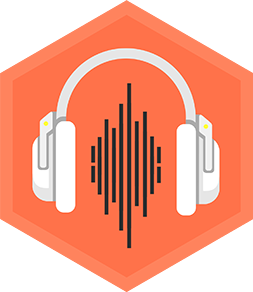Beatbox using the Tremolo Strings Effect
Record simple beatbox rhythms, then use a safe audio app to add a tremolo strings effect, adjusting speed and depth to explore sound textures.



Step-by-step guide to Beatbox using the Tremolo Strings Effect
Step 1
Open your safe audio app and start a new project so you have a fresh space to record.
Step 2
Warm up your mouth by practicing three simple beatbox sounds for one minute: a kick "b" a snare "pf" and a hi-hat "ts".
Step 3
Pick a short 4-beat rhythm you want to record and count it out loud once.
Step 4
Press record and perform your 4-beat rhythm for about 8 to 16 seconds.
Step 5
Play back your take so you can hear how it sounds.
Step 6
Press record again and make one more take if you want to try a louder softer or different rhythm version.
Step 7
Choose the take you like best by selecting it in the app.
Step 8
Open the app’s effects or plugins menu and pick the Tremolo Strings effect.
Step 9
Apply the Tremolo Strings effect to your selected take.
Step 10
Play the track with the effect turned on so you can hear the change.
Step 11
Slowly turn the speed or rate control while it plays to hear how the wobble speeds up or slows down.
Step 12
Slowly turn the depth or amount control while it plays to hear how the tremolo becomes stronger or weaker.
Step 13
Toggle the Tremolo Strings effect off and on to compare the original beatbox with the new sound.
Step 14
Save or export your favorite version inside the app so you don’t lose it.
Step 15
Share your finished beatbox with the Tremolo Strings effect on DIY.org.
Final steps
You're almost there! Complete all the steps, bring your creation to life, post it, and conquer the challenge!


Help!?
What can we use if we don't have the "safe audio app" to record and apply the Tremolo Strings effect?
Use free or built‑in apps like GarageBand (iPhone/iPad), Audacity (PC/Mac), or Voice Memos (phone) to start a new project, record your 4‑beat rhythm, and apply a Tremolo or similar effect.
My recording is too quiet or I can't hear the Tremolo Strings—what should I check?
Check microphone permissions and input gain, move closer while recording your 4‑beat rhythm, ensure the correct take and track are selected with playback volume up, and use headphones to avoid feedback when you toggle the Tremolo Strings on and off.
How can I adapt this beatbox activity for different age groups?
For younger kids simplify by practicing one or two beatbox sounds and recording a very short 4‑beat loop, while older kids can layer multiple takes, try 8‑beat patterns, and automate the Tremolo speed/rate and depth controls.
What are some ways to improve or personalize our beatbox with the Tremolo Strings effect?
Record several takes of different rhythms, stack them as layers, apply different Tremolo Strings settings (varying speed and depth) to each layer, and add reverb or EQ before exporting your favorite mix to DIY.org.
Watch videos on how to Beatbox using the Tremolo Strings Effect
How To Beatbox For Beginners: Learn The Basics (Part 2)
Facts about audio production and sound design for kids
🏆 Beatboxers often use effects and looping to build full songs — there are global beatboxing competitions that showcase this creativity.
🗣️ Beatboxing rose to fame in 1980s hip-hop and lets people imitate whole drum kits using only mouth, lips and voice.
🎧 Many kid-friendly audio apps include tremolo or string-pad presets so you can experiment safely without complex software.
🎚️ The two main tremolo controls are speed (rate) and depth (intensity) — tweak them to go from subtle shimmer to wild wobble.
🎛️ Tremolo changes a sound's volume rapidly (not its pitch), making a shimmer or wobble like vibrating strings.
How do I teach my child to beatbox and add a Tremolo Strings effect?
What materials do I need to beatbox with a Tremolo Strings effect?
What ages is this beatbox Tremolo Strings activity suitable for?
What safety precautions should I take when my child records beatbox and uses the Tremolo Strings effect?


One subscription, many ways to play and learn.
Only $6.99 after trial. No credit card required



